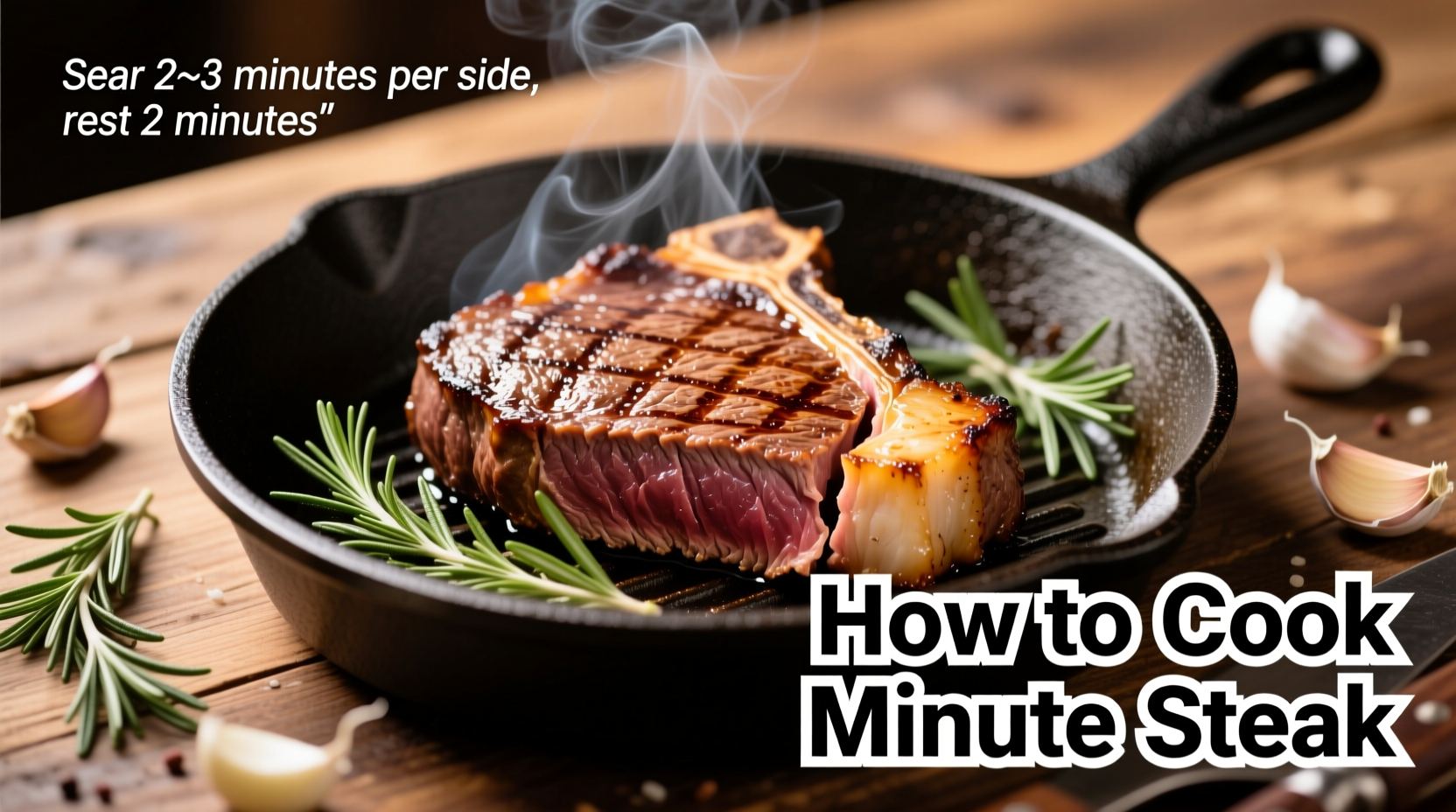Minute steak, that thin cut of beef that cooks in moments, often leaves home cooks frustrated. You've probably experienced the disappointment of chewy, overcooked steak despite following basic instructions. The problem isn't your cooking skills—it's that minute steak requires different techniques than thicker cuts. As someone who's cooked thousands of steaks in professional kitchens, I've perfected a method that delivers restaurant-quality results every time.
Why Minute Steak Demands Special Treatment
Minute steak (also called butcher's steak or minute meat) typically measures just 1/4 inch thick. This thin profile creates unique challenges:
- It cooks 3-4 times faster than standard cuts
- Surface area to volume ratio affects browning
- Less margin for error in timing
- Prone to toughness if handled incorrectly
According to USDA Food Safety and Inspection Service guidelines, beef should reach 145°F (63°C) for safe consumption, but minute steak's thinness means it can easily overshoot this target before developing proper flavor.
Essential Preparation Steps
Proper preparation makes the difference between tough and tender:
- Thaw completely - Never cook frozen minute steak (USDA recommends refrigerator thawing for 24 hours)
- Dry thoroughly - Pat with paper towels for 60 seconds per side
- Season simply - Salt, pepper, and optional garlic powder (avoid wet marinades)
- Bring to room temperature - 15 minutes on counter before cooking
| Doneness Level | Target Temperature | Visual Indicator | Recommended Cooking Time |
|---|---|---|---|
| Rare | 120-125°F (49-52°C) | Bright red center | 60-90 seconds per side |
| Medium-rare | 130-135°F (54-57°C) | Warm red center | 90-120 seconds per side |
| Medium | 140-145°F (60-63°C) | Pink center | 120-150 seconds per side |
The Perfect Cooking Process
Follow these steps for foolproof minute steak:
1. Equipment Setup
Use a heavy-bottomed cast iron or carbon steel skillet—these materials retain heat better than non-stick pans. Preheat over medium-high heat for 5 minutes until a drop of water sizzles and evaporates immediately.
2. The Critical Sear
Add 1 teaspoon high-smoke point oil (avocado or grapeseed), then place steak in the pan. Never press down—this squeezes out precious juices. Cook undisturbed for the full time based on your desired doneness.

3. The Flip and Finish
Flip once using tongs (not a fork which pierces the meat). For extra flavor, add a pat of butter, crushed garlic, and fresh thyme during the last 30 seconds of cooking, tilting the pan to baste the steak.
4. The Essential Rest
Transfer steak to a cutting board and tent loosely with foil. Rest for 5 minutes—this allows juices to redistribute. Cutting too soon causes all those flavorful juices to escape onto your plate.
Troubleshooting Common Problems
Even experienced cooks encounter issues with minute steak. Here's how to solve them:
Tough Texture
Cause: Overcooking or improper resting
Solution: Use a timer and thermometer—90 seconds per side is usually perfect for medium-rare. Always rest before slicing.
Burning Before Cooking Through
Cause: Excessive heat or oil with low smoke point
Solution: Reduce heat to medium after preheating. Use oils with smoke points above 400°F (204°C).
Uneven Cooking
Cause: Inconsistent steak thickness
Solution: Gently pound thicker areas with a meat mallet before cooking to create uniform thickness.
When Minute Steak Works Best (and When It Doesn't)
Minute steak excels in specific scenarios but has limitations:
- Ideal for: Quick weeknight dinners, stir-fries, sandwiches, and dishes requiring thin sliced beef
- Avoid for: Grilling (too thin, falls through grates), sous vide (loses structural integrity), or dishes requiring long cooking times
- Best cuts: Top round, sirloin tip, or eye of round work best as minute steak
Food safety experts at the USDA emphasize that minute steak's thinness requires careful monitoring—it can go from perfect to overcooked in as little as 15 seconds.
Serving Suggestions
Minute steak's delicate texture pairs well with:
- Creamy mashed potatoes and roasted vegetables
- Simple pan sauces made from the fond left in the skillet
- Fresh arugula salad with lemon vinaigrette
- Sliced thin for steak sandwiches with caramelized onions
For best results, slice against the grain at a 45-degree angle. This shortens the muscle fibers, enhancing tenderness.
Frequently Asked Questions
Can I marinate minute steak?
Yes, but limit marinating to 30-60 minutes maximum. Acidic ingredients (like vinegar or citrus) will begin to 'cook' the thin steak, making it mushy. Oil-based marinades are safer for longer periods.
Why does my minute steak always turn out tough?
Toughness usually comes from overcooking or not resting properly. Minute steak cooks extremely fast—90 seconds per side is typically perfect. Always rest for 5 minutes before slicing to allow juices to redistribute.
Can I cook minute steak in the oven?
While possible, oven cooking isn't recommended. The thin profile makes minute steak prone to drying out in dry oven heat. Pan-searing creates the necessary Maillard reaction for flavor development that oven methods can't replicate effectively.
How do I know when minute steak is done without a thermometer?
Use the touch test: raw steak feels like the base of your thumb. For medium-rare, it should feel like the fleshy part between thumb and index finger when making an OK sign. For medium, like the area when making a loose fist. Timing (90-120 seconds per side) is more reliable for this thin cut.
What's the difference between minute steak and cube steak?
Minute steak is simply thinly sliced beef, while cube steak has been mechanically tenderized with a pattern of small indentations. Cube steak often comes from tougher cuts and has a more uniform thickness, while minute steak retains the natural texture of the original cut.











 浙公网安备
33010002000092号
浙公网安备
33010002000092号 浙B2-20120091-4
浙B2-20120091-4